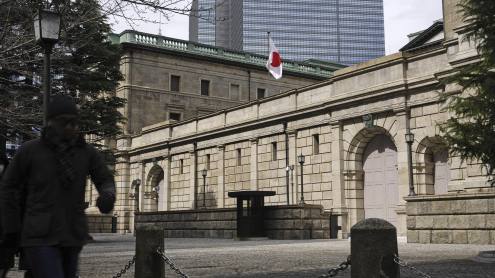Prospects for accelerated financial and economic, as well as political and social, reforms were enhanced by the successful re-election of President Chen Shui-bian of the centre-left Democratic Progressive Party (DPP) with a majority mandate in Taiwan’s third, and most hotly disputed direct presidential election on March 20.
Helped by a timely economic and financial recovery and lifted by a rise in Taiwanese national consciousness, the incumbent President Chen and Vice-president Annette Lu narrowly defeated former ruling Nationalist Party of China (KMT) chairman Lien Chan and his conservative running mate, James Soong of the People First Party.
The DPP incumbents won 50.1% (6.47 million votes), compared with 49.9% (6.44 million votes) for Messrs Lien and Soong, who were once bitter rivals in the KMT but formed a united ticket in the hope of restoring the pan-KMT (“pan-blue”) alliance to power. Widespread obsession with the narrow winning margin of less than 30,000 ballots hid the structural rise (of 1.5 million votes) in DPP support from the 39.3% gained by Mr Chen in his plurality victory over Mr Soong and Mr Lien (on separate tickets) in March 2000.
Campaign failures
The narrow DPP victory was a shock to the KMT and PFP leaders and their supporters, who expected a win based on the combination of Mr Soong’s 36.8% in his maverick run in March 2000 and Mr Lien’s 23.0% as the KMT standard-bearer. The KMT-PFP campaign was hampered by its inability to set aside an ideological attachment to the increasingly unpopular notion of eventual unification with China. And Mr Lien failed to articulate a forward-looking programme that could appeal to youth and shed the hidebound anti-democratic image of the two candidates and their parties – an image that has been reinforced by four years of virtually unrelieved obstruction by the opposition-controlled Legislature.
The image of the KMT-PFP alliance was not improved after the polls by the refusal of Messrs Lien and Soong to acknowledge – much less gracefully accept – the electoral verdict. Instead, both leaders and their parties mobilised thousands of angry supporters to occupy the plaza in front of the presidential complex in Taipei for more than a week, and engaged in an intense round of political manoeuvres aiming variously at a full recount; a recount of Mr Chen’s votes; a re-election; a declaration of a “state of emergency” and even the resignation of the winning incumbent.
Despite a 500,000-strong rally on March 27, the post-election resistance campaign – which became widely seen as an abortive political coup attempt – was eventually defused by the widespread revulsion over incidents of violence by pan-blue lawmakers and supporters, frequent and contradictory shifts in demands, expressions of approval for the DPP government by Washington, and Mr Chen’s own agreement to a recount.
Initial indications from the completed first phase of the recount showed no systematic election malfeasance. The recount is being conducted under the auspices of the Taiwan High Court in response to suits filed by the KMT-PFP to nullify the result and annul the election itself. Expectations are that the March 20 result will not be reversed.
The main concrete outcome of the “pan-KMT” campaign of refusal has been an erosion in public support for the two conservative parties. A poll of 1025 Taiwanese adults conducted by the Focus Research Survey (FRS) company in early June showed that if opposition hopes for a re-election were realised, 40.7% of the respondents would vote for the DPP incumbents and 26.4% would back the Lien-Soong ticket. This contrasts with FRS’s final pre-election poll on March 19, which showed the two in a dead heat with 34.5% each.
Backlash possibility
The alienation of moderate voters by the KMT-PFP’s reaction to March 20 may also open the door for the DPP and the allied Taiwan Solidarity Union (together popularly called the “pan-green” camp after the DPP’s green colours) to snare a majority in the 225-seat national legislature in year-end elections. Such a result would break a four-year deadlock and pave the way for the rapid approval of many administrative, financial, economic and social reforms and public projects proposedby the DPP government and stymied by the KMT-PFP hold over Legislative Yuan.
New confidence
The DPP government is reflecting an enhanced confidence in its majority mandate through an acceleration of moves to implement its wide-ranging reform platform.
In President Chen’s May 20 inaugural speech, “Laying the foundations for sustainable Taiwan”, and the June 1 administrative report by reappointed Premier Yu Shyi-kun, the DPP government unveiled its decision to shift policy focus from the pursuit of nominal monetary growth to improvement of the quality of life through promoting “comprehensive and balanced” sustainable economic development, expanding citizen participation, building a social “life security net”, enhancing ecological protection and fostering creative and cultural industries.
During an internal “administrative revitalisation forum” attended by the new Cabinet in late May, chairman of the Council for Economic Planning and Development Hu Sheng-cheng listed the five economic key goals of the new DPP administration as:
- Positioning for the global economy and expanding new space for trade, especially through signing free trade area (FTA) agreements, developing Taiwan into a “regional funding centre” and diversifying export markets from excessive reliance on the People’s Republic of China (PRC) to new markets in Latin America, south Asia and eastern Europe;
- Promoting investment in Taiwan and creativity as the new drivers of growth, through acceleration of public infrastructure investment, second-stage financial reform and promotion of cultural and creative industries;
- Grasping competitive edges and creating new niches for industry, including developing Taiwan as a “innovation R&D base”, a high value-added industrial centre and a node for international logistics;
- Expanding employment and strengthening long-term care systems to cope with population aging through promotion of localised industries, tourism, cultural activities, recreational agriculture and other domestic demand activities and promotion of a national pension system; and
- Promoting sustainability planning and establishing a new framework for national land and resource management, including promotion of energy-efficiency and renewable energy industries and realisation of comprehensive land and marine resource planning.
Mr Hu related that a key plank of the first goal is to develop Taiwan’s capabilities as a “regional funding centre”. He said the government would study how to ease restrictions on capital utilisation of listed companies and mechanisms to attract listings on the Taiwan Securities Exchange by Taiwanese-invested companies abroad, including in the People’s Republic of China.
The DPP government needed to persist in financial reform measures to achieve this goal, said Mr Hu, including acceleration of the process of dealing with troubled financial institutions, establishing better methods for small enterprises to acquire working capital and easing restrictions on more derivative financial products.
Economic boost
The confidence of the newly re-elected DPP government is also getting a boost from the continued strengthening of Taiwan’s economic and financial fundamentals following the election. The revival of exports and domestic investment and consumption in the early 2004 lifted first-quarter economic growth to 6.28% and will drive annual expansion of 5.41% for 2004, according to the official Directorate-General for Budget, Accounting and Statistics (DGBAS) forecast on May 14.
DGBAS deputy director-general Hsu Jan-yau says: “The revival of the global economy from the fourth quarter last year has driven export growth and the export-driven demand has in turn spurred the expansion of domestic demand, including private capital investment and private consumption spending.”
But he says the possible impact of a likely rise in US interest rates, the effort by the PRC government to cool down the over-heated Chinese economy and the rise in global crude oil prices may affect the pace of expansion in the second half. The forecast also does not reflect the possible second-half stimulus of the government’s proposed five-year, NT$500bn ($14.8bn) boost in public infrastructure spending under the rubric of the “10 New Construction Projects”. This is because the Legislative Yuan has yet to approve the special law and special budget for the scheme, which was proposed by the DPP-led Cabinet late last year.
Health breeds growth
The DGBAS analyst notes that the restoration of vibrant economic health will spur growth of private consumption expenditures to 2.97%, compared with the flat 0.79% last year, while private fixed capital formation is expected to climb by nearly 23% compared with a 0.7% contraction last year. The DGBAS forecasts inflation-adjusted growth in exports of goods and services will rise 13.2% in 2004 and imports of goods and services, including a sharp rise in capital goods, will rise 15.3%.
Mr Hsu says the expected overall growth pace of 5.4% for 2004 would return the economy to the levels of expansion last seen in 1999 and 2000 and that, unlike the past three years, it featured a strong revival of domestic demand, especially in private capital investment. “We can characterise the overall economic trend this year as warm externally and internally,” he says.
Polaris Research Institute president Liang Kuo-yuan says Taiwan’s current business cycle shows signs of a more “robust expansion” in which initial export-driven expansion is supplanted by domestic investment and consumption as the main growth driver.
Although some economists claim that Taiwan’s strong exports and reviving private investment confidence were driven by trade with the PRC, Taiwan Thinktank chairman Chen Po-chih says the revival of investor confidence is related more to the successful development of new high-technology industries, such as TFT-LCD monitors, which have boosted domestic confidence. President Chen’s re-election is also restoring investor confidence because the re-election of the DPP-led government will allow policy continuity, he says.
“Regardless of political stands, what the business sector fears most is uncertainty and, as the political situation stabilises, most companies will be pleased that they will not have to go through a period of policy vacuum or uncertainty,” says Mr Chen.
On the financial front, as of March 31, the volume of loans and investments by major domestic financial institutions rose 5.0%. The volume of loans reached NT$1450bn, up 8.2% on an annualised basis, by March 31 as banks resumed active lending after a period of coping with the mountain of bad loans left over from the late 1990s’ bubble.
The non-performing loan ratio (NPLR) for domestic banks fell to 3.8% by the end of April, breaking through the 4% line for the first time in seven years, compared with 4.33% at end-2003 and a peak of 8.02% at March 31, 2001. If loans under observation are added, the NPLR stood at 5.31% as of April 30, compared with 6.08% at the end of last year.
A positive sign for the continuation of financial reform was the approval on June 11 of an one-year extension for the authority of the official Financial Reconstruction Fund (FRF), Taiwan`s equivalent of a US-style resolution trust company. The fund only has NT$9bn of its original NT$150bn war chest left after dealing with 44 troubled financial institutions.
Objections to fund
Opposition lawmakers are still refusing to refinance the FRF, whose authority would have expired on July 9 without the extension, mainly due to objections over the practice of guaranteeing non-deposit liabilities when the fund takes bankrupt financial institutions into receivership. However, on the condition that the Legislature approves revisions to the FRF Establishment and Management Act by October 19, the governing and opposition parties agreed to end such guarantees for non-deposit liabilities after January 15, 2005.
Moreover, finance ministry officials agreed to a demand by opposition lawmakers that 20% of the FRF’s funds will be used to deal with the problem of grassroots financial institutions, such as credit departments of farmers’ associations and credit co-operatives.
A new era for Taiwan’s financial sector begins on July 1 when the Cabinet-level Financial Services Supervisory Commission opens its doors and begins to realise unified supervision and policy-making for the banking, securities, futures and insurance sectors.











